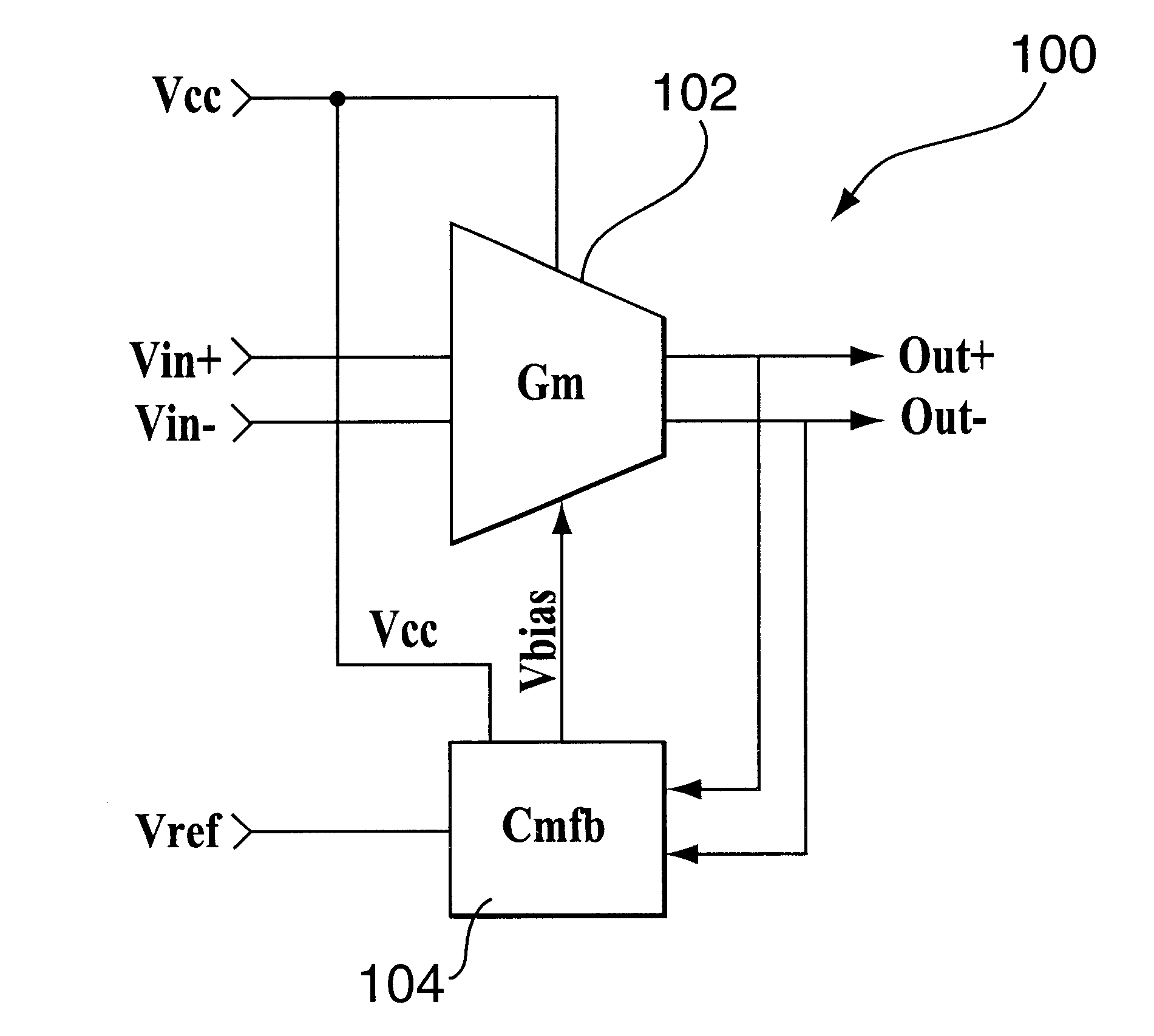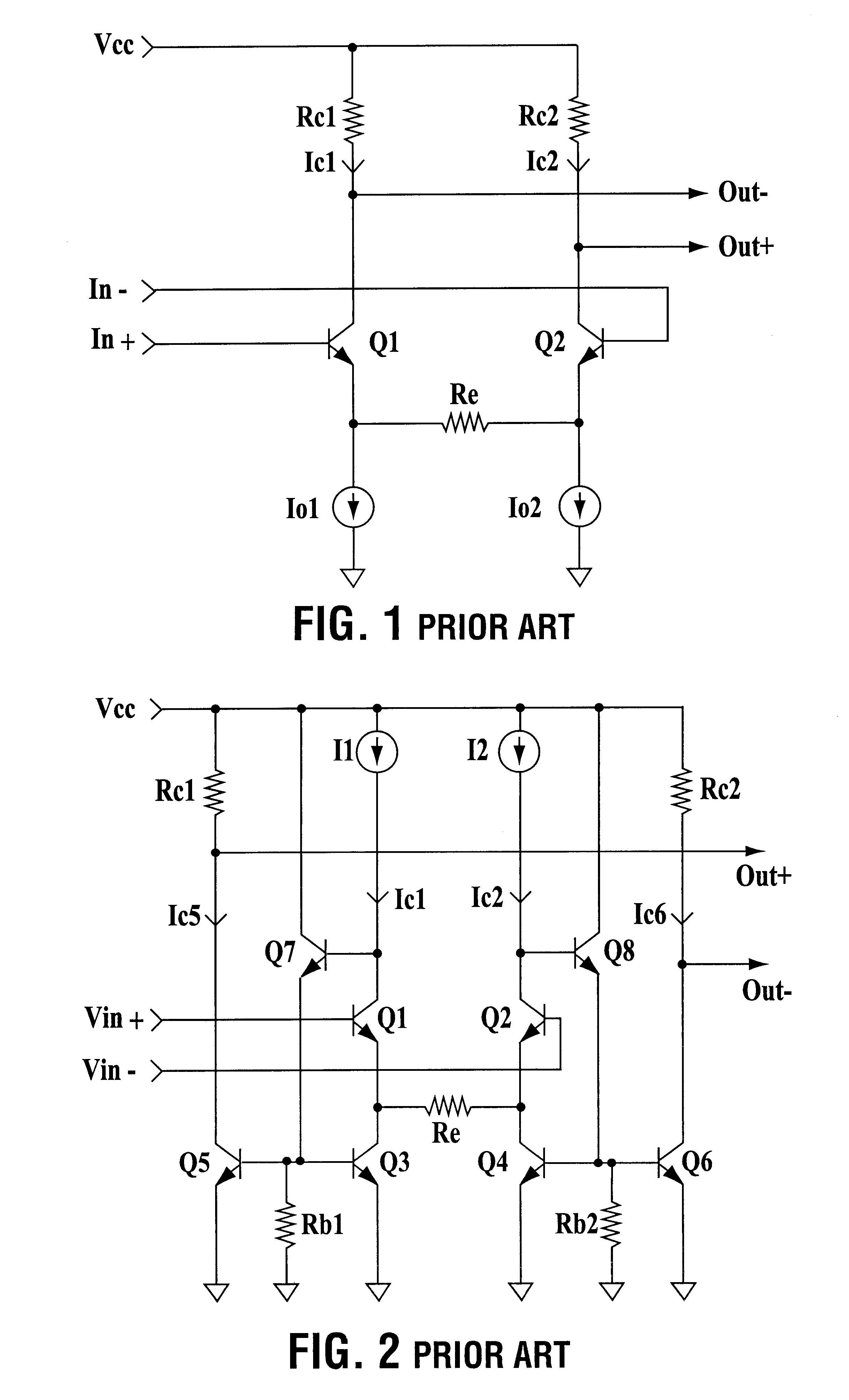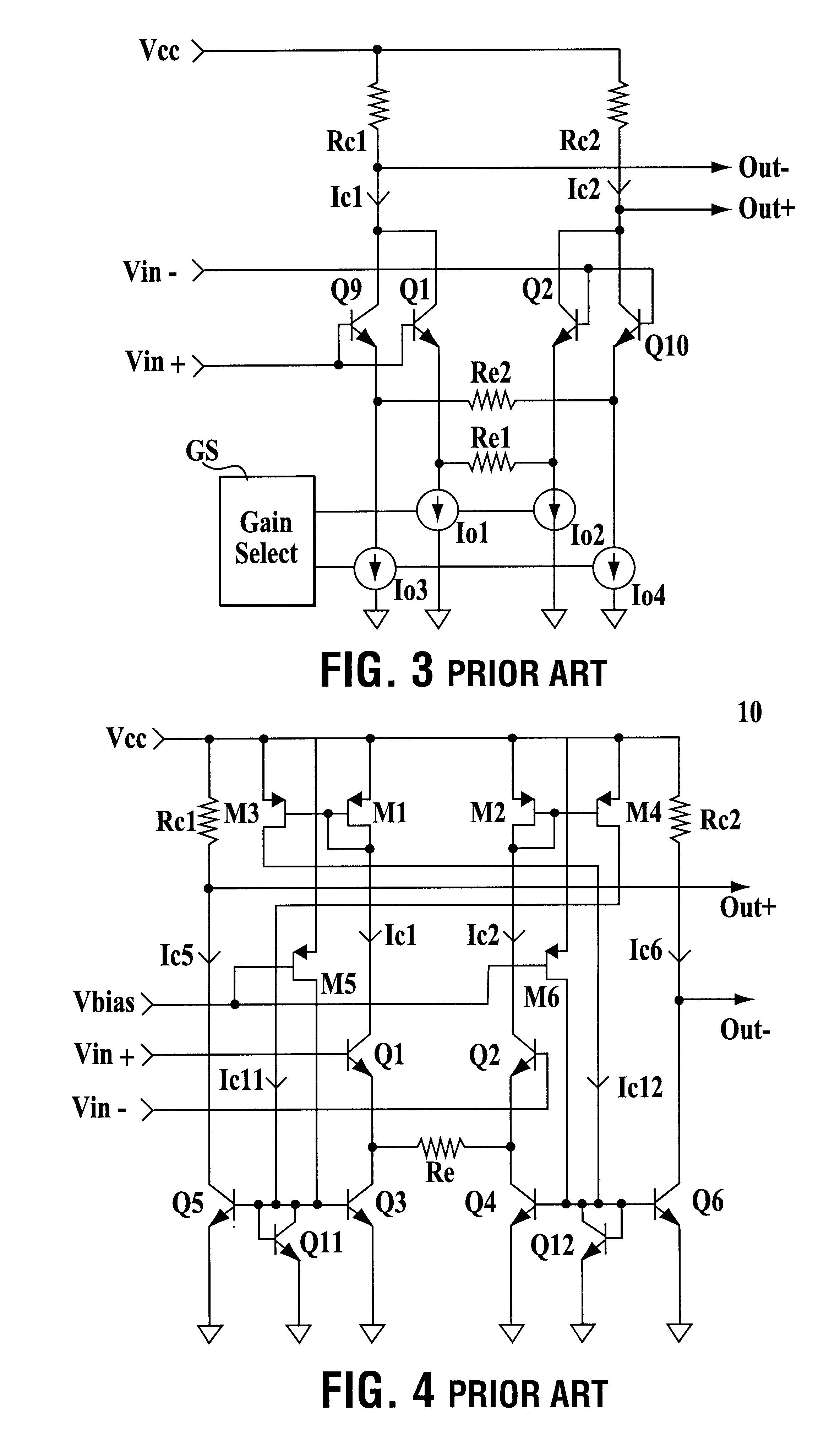Low-voltage transconductance amplifier/filters
a transconductance amplifier and filter technology, applied in the direction of low noise amplifiers, amplifier modifications to reduce non-linear distortion, frequency selective two-port networks, etc., can solve the problem of measurable degradation of the bit error rate (ber) in digital communication systems
- Summary
- Abstract
- Description
- Claims
- Application Information
AI Technical Summary
Problems solved by technology
Method used
Image
Examples
Embodiment Construction
FIG. 1 presents a transconductance cell known in the art. The cell includes a transconductance core consists of two transistors Q1, Q2, that are coupled to differential inputs In+ and In-. A degeneration resistor Re couples the emitters of transistors Q1 and Q2 to the current sources Io1 and Io2. This degeneration resistor improves the third order intercept point IP3 of the cell. In the field of wireless communication devices, the incoming signals can be radio frequency (RF) or intermediate frequency (IF) signals. The incoming signal is present at the input ports, In+ and In- as a differential (balanced) voltage signal. The differential signal consists of a non-inverted and an inverted signal. The differential voltage signal is converted and amplified using the transistors Q1 and Q2 into two differential currents Ic1 and Ic2. The device that converts a voltage signal into a current signal and amplifies this signal before presenting an amplified voltage signal is called transconducta...
PUM
 Login to View More
Login to View More Abstract
Description
Claims
Application Information
 Login to View More
Login to View More - R&D
- Intellectual Property
- Life Sciences
- Materials
- Tech Scout
- Unparalleled Data Quality
- Higher Quality Content
- 60% Fewer Hallucinations
Browse by: Latest US Patents, China's latest patents, Technical Efficacy Thesaurus, Application Domain, Technology Topic, Popular Technical Reports.
© 2025 PatSnap. All rights reserved.Legal|Privacy policy|Modern Slavery Act Transparency Statement|Sitemap|About US| Contact US: help@patsnap.com



